PhD Opportunities
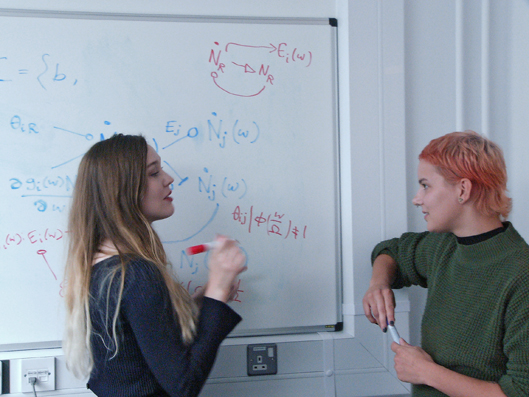 Would you like to join in ?
Would you like to join in ?To start 2022
How parasites stabilise ecological communities and why it matters.
See here to find the project advertised as part of the UK Natural Environment Research Council QUADRAT Doctoral Training Programme (a collaboration between Queen's University Belfast and Aberdeen University). (Its on the bottom left of that page).
On the Ma of Ecology page, parasites were identified as regulators of foodwebs - performing a critical ecological function that is often neglected by ecologists. They increase mortality rates, reduce reproduction rates and alter the behaviour of their hosts in a range of (sometimes bizarre) ways, with the net effect of regulating trophic links and flow rates. Questions immediately arise: how can such regulatory functions be quantified, how do they depend on parasite diversity and how are they effected by community change?
The suggestion for this PhD studentship is to use Metabolic Control Theory, in particualar the supply-demand theory of Hofmeyr and Cornish-Bowden (2000). It was developed to explain the way metabolic flows are maintained in functional balance within the cell, but replacing the metabolic kinetics with population dynamics and considering trophic interactions as biomass flows allow us to bring its powerful framework to bear on ecological systems analysis. The work will allow the ecological role of parasites to be incorporated into cybernetic models of ecological communities, along side the facilitator and recycling organisms (see below). More broadly, this all works to identify and quantify the system-level information of ecological systems, answering the question of whether they really are a thing in themselves (i.e. are they the product of strong emergence?).
To do this project, you would need to be fairly competent in biologically relevanant mathematics (e.g. ordinary differential equations) and happy to work (a lot) with mathematical programming packages (Matlab and Mathematica). There is also oportunity to do some lab experiments with small invertebrates and their natural parasites.
This PhD is advertised on FindaPhD, with a link for making an application.
Funding for this project will cover UK tuition fees, stipend and research & training support.
To start any time.
How The information structure of ecological communities quantitatively affects their ecological function.
Biodiversity-ecosystem function relations ((BEFRs) are central to ecology, economic value and conservation. They have only been quantified for foodwebs and plant communities to-date: excluding parasitism and mutualism and with no explicit account of network structure. Presently we have no quantitative measure of ecological structure - the network of interactions - and its effect on BEFRs. Great anticipation was generated this summer by three recent papers developing a method using information metrics, including very recent developments from brain research (Integrated Information (IIT)- Tononi et al.) and chemistry (entropic capacity - by Tom Shneider). The race is on to apply this approach to real ecological communities.
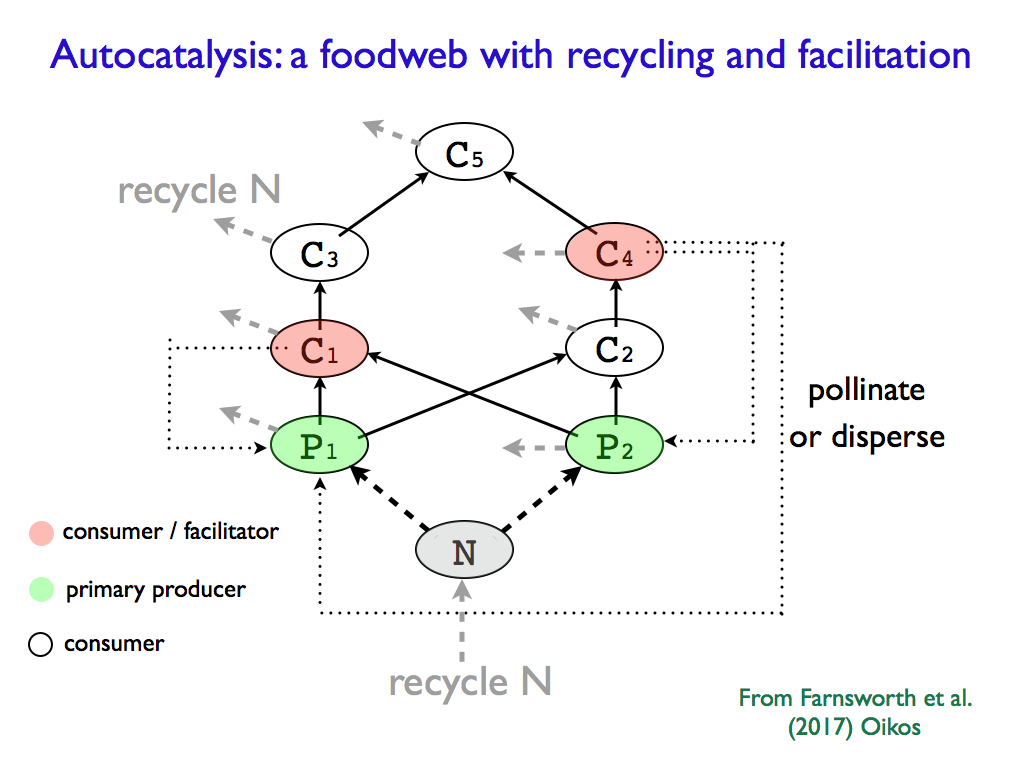
In this project, dynamic models of known communities will be built using mathematical software (such as Matlab or Mathematica). These account for biomass, using differential equations. For any set of interacting species, there are potentially several configurations of interaction and a wide range of quantitative interaction rates. Dynamic equilibrium states will be found for each of the communities built. Community structures will be quantified in terms of entropy metrics and IIT. Results will be related to production rate and niche packing efficiency to form BEFRs of community structure. This quantifies ‘hidden’ diversity and the the extent to which a community is a coherent whole; answering a centuries-old puzzle of practical importance and urgency.
This project will be co-supervised by Chris Antonopoulos of Essex University, co-wrote the following paper of great relevance to the project:
Dynamical complexity in the C.elegans neural network. 2016.
Antonopoulos, C.G. and Fokas, A.S. and Bountis, T. C. Eur. Phys. J. 225, 1255-1269.
It will also be linked in with the sDiv group
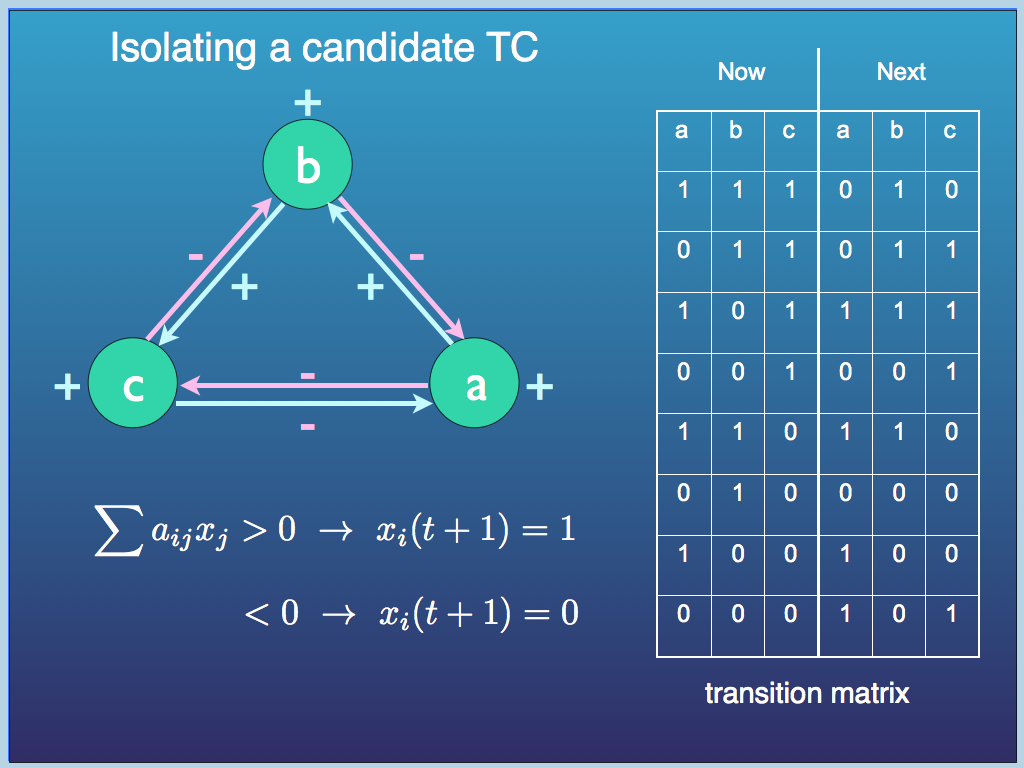
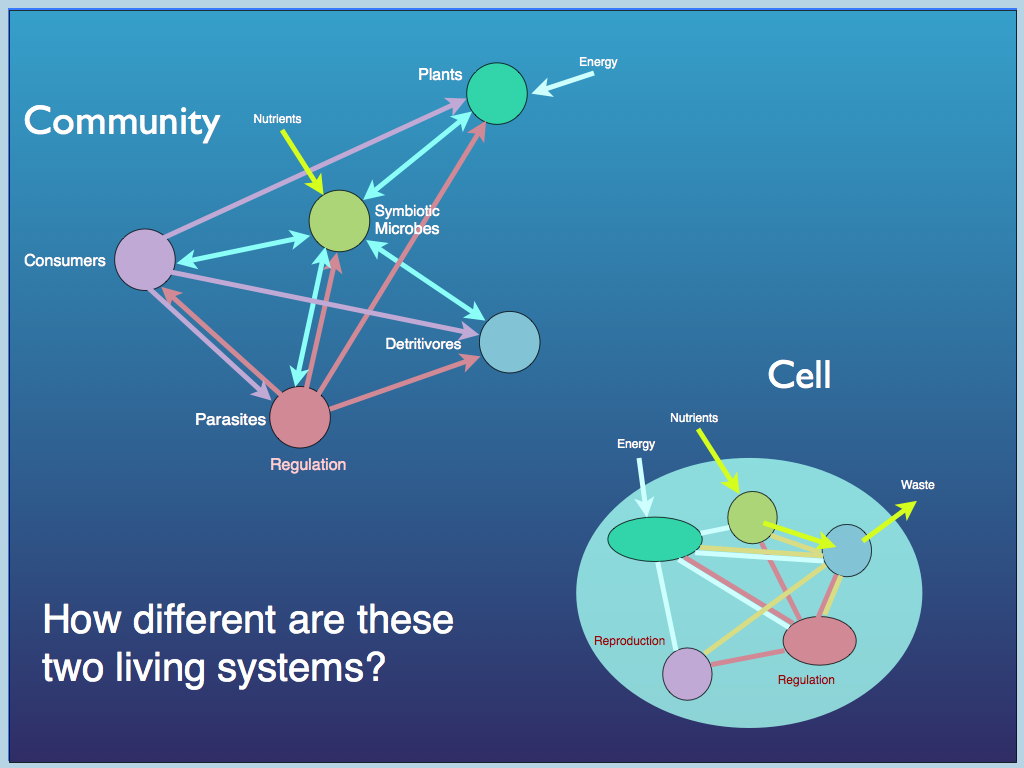
Lots more information about this on the IFB website (where you are now).
By the way - a PhD in mathematical biology is regarded extremely well by employers in science, engineering, finance and management: in fact it is one of the most sought after of all proven capabilities.
Your lead supervisor / advisor will be:
Dr Keith Farnsworth,
School of Biological Sciences,
Queen's University Beflast MBC 97 Lisburn Road,
Belfast BT97BL,
United Kingdom.
Email: k.farnsworth (at) qub.ac.uk
Formal Description:
The contribution of supra-organism information to biodiversity and ecological function.
Biodiversity / ecosystem function relationships (BEFs) quantify the contribution of diversity among organism types (usually species) to overall functioning (usually a measure of production rate) by experimentally adding or removing species from a system. Whilst many variations of this have been explored, to-date no account has been taken of the structural information embodied in the particular relationships among the organism types. If ecological communities are more than mere assemblages of species-specific populations, there must be a community structure that sets rules for interactions among the populations, which collectively amount to system-wide information instantiated by the relationships. This structure is analogous to the spatial organisation among engine parts that makes a functioning engine from a collection of components. It is an embodiment of the information needed to piece the engine together correctly. Such information is ‘hidden in plain sight’: we see the components, can classify and count them, but unless we are making an engine, we may miss the constraints of form in each that determines how they should fit together to make a functioning whole. Ecologists tend to refer to the number of types of organism classified into categories, as the ‘ecological structure’ and this is what conventional BEF experiments work with. This project makes the next step by quantifying the formative constraints of organism types which determine the way they fit together to make a functioning whole. Information of this kind is hard to find, but may be quantified using advanced information theoretic metrics such as Integrated Information (from integrated information theory) and other measures of system-level causality (e.g. Dynamic Causal Modelling).
The project will work with simulated ecological communities and apply information theoretic and causality metrics to the computation of BEFs, focussing on the change of system-level information embodiment. It will include a search for closure to efficient causation - the cyclic ontology of self-making systems that is an essential feature of life. This will involve the development and use of advanced network analysis, statistical and information theoretic methods. It will require a high level of proficiency in mathematics and scientific computing as well as an in interest in fundamental biology and an open-minded theoretical approach. Solving the problem and quantifying supra-organism embodied information will be a major contribution to understanding biodiversity and the overall organisation of living systems.
The project is open to any student with the needed competencies, but is presently unfunded. However it is incorporated into several grant applications, so may receive funding over the next year or so. Self funding students from anywhere in the world are encouraged to enquire and would take an active role in a wider international collaboration that includes those developing the organisational approach in systems biology as well as those developing metrics of causation and function.
Those interested are encouraged to start with the Ma of Ecology page.
Accounting for biological invasion success and ‘impact’.
Biological invasions account for a large and growing threat to biodiversity. Recent work focussing on the trophic relations among invasive organisms and their new host communities have proved effective in predicting some aspects of invasion success and ‘impact’, which may be quantified by a measure of the population-level disruption of the host community. That still leaves a host of life-history and functional traits and the role of associated parasites and even semiotic interactions (e.g. the ‘landscape of fear’), which should be accounted for. Since every invasive / host community is likely a unique case, we need to take a statistical approach to find patterns in the combined effects of all these factors in determining invasion success and impact (using multivariate correlation and cluster analysis, for example).
This project will start with a functional classification of organisms and beginning with the data collected to describe trophic relations (e.g. functional response metrics), it will expand the range of traits that can be used concurrently as explanatory variables in predicting invasion success and impact. It will also seek to interpret and explain the empirical findings.
The work will involve a high level of statistical competence, some mathematical modelling of population interactions and a keen interest in quantitative ecology. The project will integrate with existing work in Queen’s University Belfast on invasion ecology and the development of information-based metrics of biological function. Though it is presently unfunded, it is incorporated into several grant applications, so may receive financial support within the next year or so. Self funded students are most welcome to enquire.
The work will be jointly supervised by Dr Keith Farnsworth and Prof. Jaimie Dick, with international involvement and collaboration opportunity.
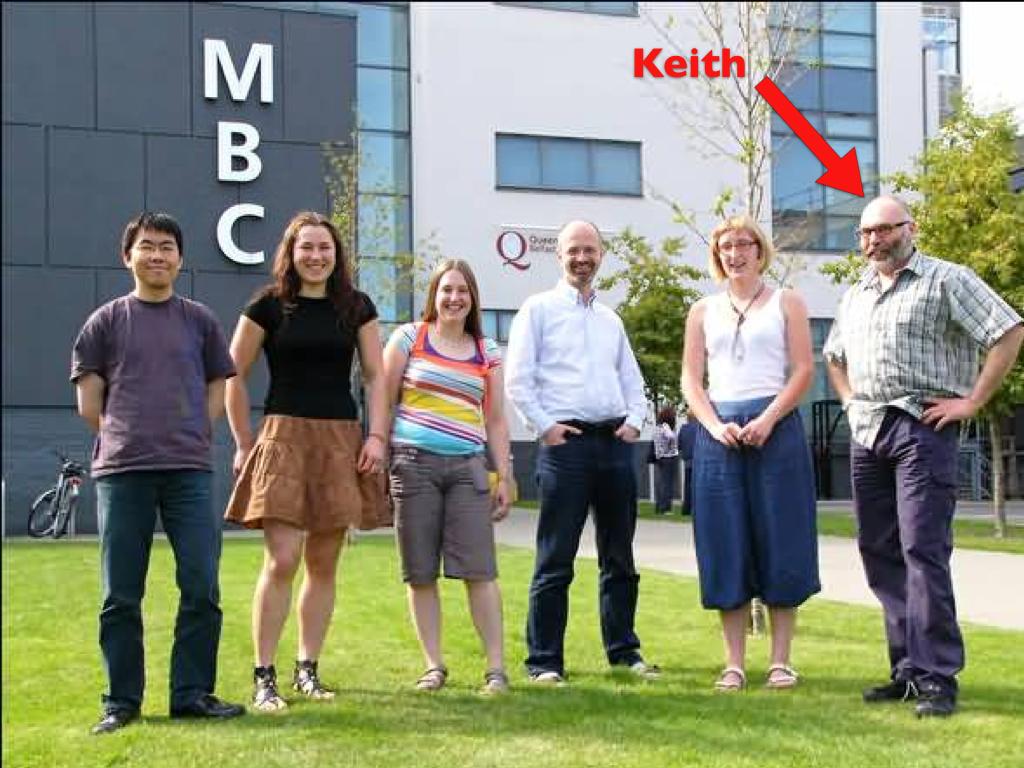
Would you like to join us? (actually this is a photo from 2014, most of these people have moved on now: Tak on the left was a PhD student and is now a professional sceintist Singapore National University, Olga, next to him, is now the lead scientific computing postdoc at a university in Ireland, Jen is now a mathematical modelling specialist for a big insurance company, Axel (first beard) is Reader in Aquatic Biology at Queen Mary College London, Deirdre is a senior researcher now based in Bali, and then there's me).
(If you contact me by email, please mention IFB PhD in the subject, thanks).